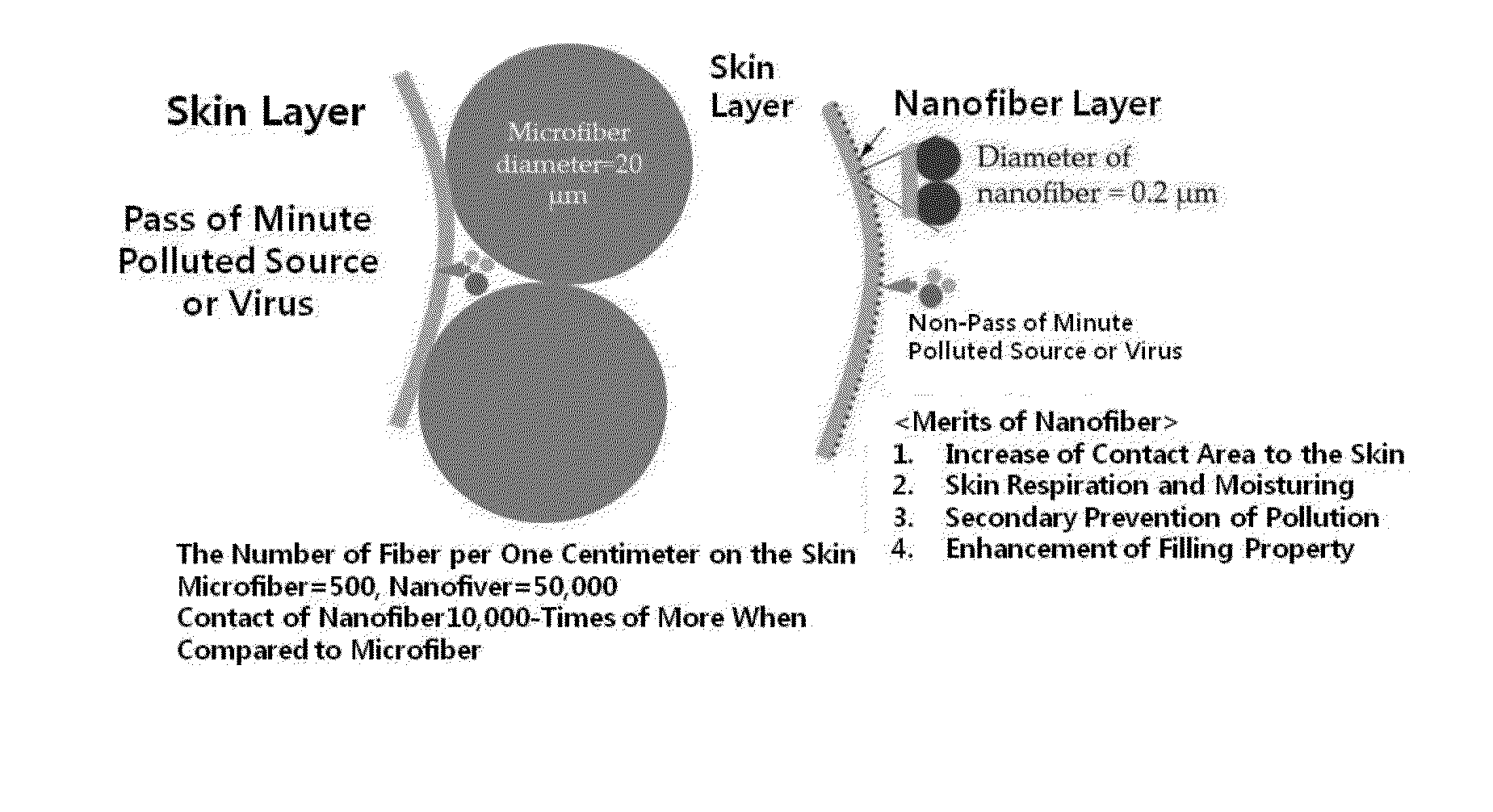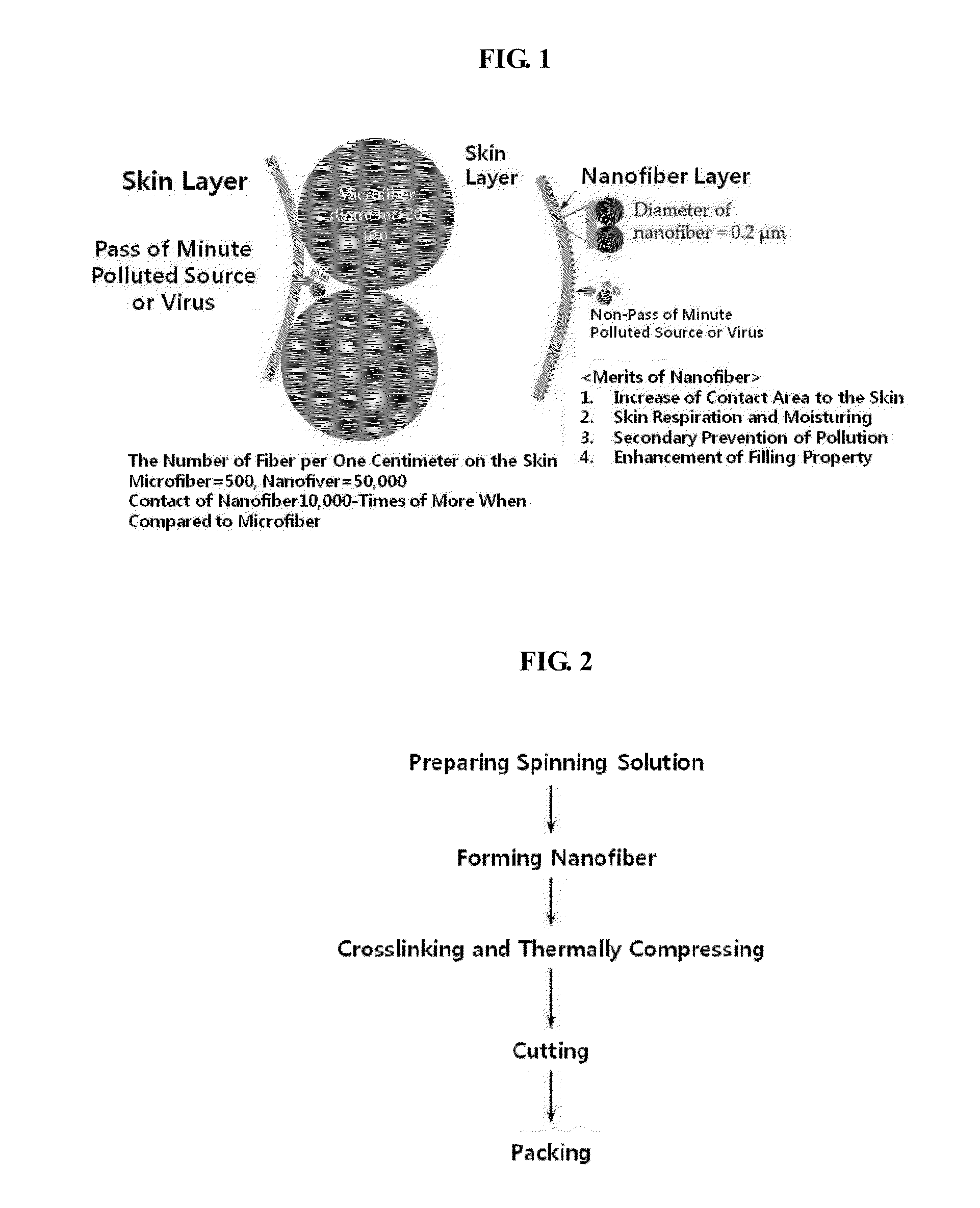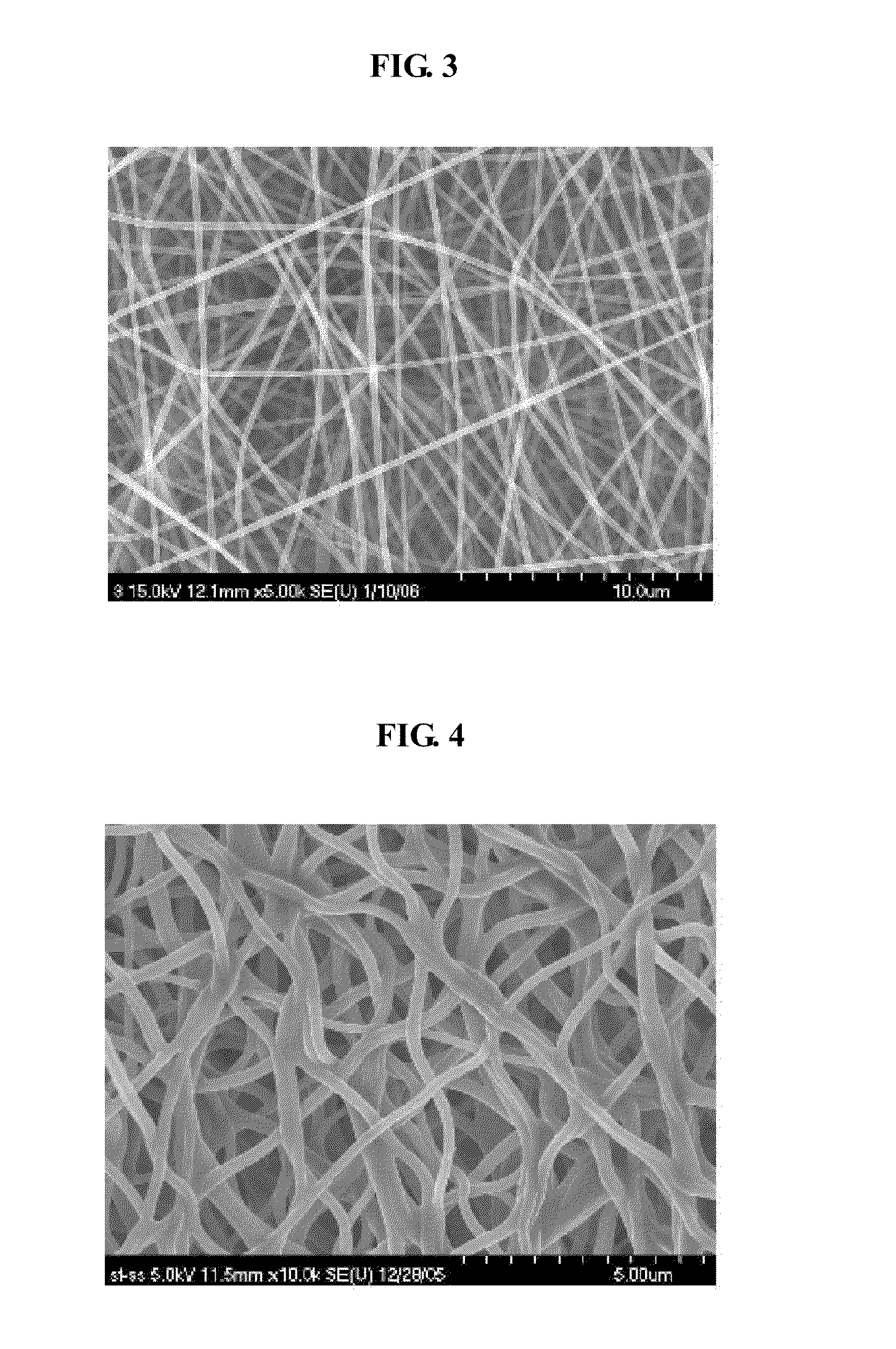Cosmetic sheet formed from nanofiber with controlled dissolution velocity and method of manufacturing the same
- Summary
- Abstract
- Description
- Claims
- Application Information
AI Technical Summary
Benefits of technology
Problems solved by technology
Method used
Image
Examples
example 1
[0063]A hydrophilic polymer such as polyvinyl alcohol (PVA) was dissolved by 25 wt % in water to have prepared a PVA spinning solution at 80° C. Water-soluble collagen was added by 10 wt % in the prepared PVA solution with respect to the PVA and agitated at the room temperature to thereby have prepared a spinning solution. The spinning solution was moved in a spinning pack, to then have performed electrospinning in the spinning atmosphere of a temperature of 30° C. and a relative humidity of 60%, at an applied voltage of 25 kV, so that a distance between the spinning nozzle and the collector plate was 20 cm, and the discharge rate of the spinning solution per minute became 0.05 cc / hole, to thereby have obtained a nanofiber web.
[0064]A scanning electron micrograph (SEM) photo of the thus-obtained PVA nanofiber web is shown in FIG. 3, in which distribution of the fiber diameter was approximately 150-350 nm, and the average fiber diameter was about 200 nm. The thus-prepared PVA nanofib...
example 2
[0065]A hydrophilic polymer such as polyvinyl alcohol (PVA) was completely dissolved by 25 wt % in water at 80° C., and thereafter a crosslinking agent such as TSA (para-toluene sulfonic acid) and a functional substance such as water-soluble collagen were added in the PVA-dissolved water by 2 wt % and 5 wt %, respectively, with respect to the PVA at the room temperature to thereby prepare a spinning solution. The spinning solution was moved in a spinning pack, to then have performed electrospinning in the spinning atmosphere of a temperature of 30° C. and a relative humidity of 60%, at an applied voltage of 25 kV, so that a distance between the spinning nozzle and the collector plate was 20 cm, and the discharge rate of the spinning solution per minute became 0.05 cc / hole, to thereby have obtained a nanofiber web.
[0066]The spinning solution was spun in the same manner as that of Example 1 to thus have obtained a PVA nanofiber web containing the crosslinking agent and the water-solub...
example 3
[0068]A hydrophilic polymer such as polyvinyl pyrrolidone (PVP, K-80) was dissolved by 15 wt % in a mixed solvent of ethanol and water (75 / 25 wt %), at the room temperature to thereby have prepared a PVP spinning solution. Functional materials such as water-soluble collagen, a hyaluronic acid, and vegetable platinum were added in the PVP solution by 5 wt %, respectively, with respect to the PVP to then be agitated at the room temperature, and a crosslinking agent such as poly (urea-co-formaldehyde) was added by 2 wt % in the PVP solution with respect to the PVP, to thereby have prepared a spinning solution.
[0069]The spinning solution was electrospun in the same manner as that of Example 1 to thus have obtained nanofiber web containing the PVP and the functional material. The thus-prepared nanofiber web was crosslinked by using hot air for 30 minutes at 125° C. to thereby have a PVP crosslinked nanofiber web containing the functional material.
[0070]Meanwhile, in the same manner as in...
PUM
| Property | Measurement | Unit |
|---|---|---|
| Length | aaaaa | aaaaa |
| Diameter | aaaaa | aaaaa |
| Solubility (mass) | aaaaa | aaaaa |
Abstract
Description
Claims
Application Information
 Login to View More
Login to View More - R&D
- Intellectual Property
- Life Sciences
- Materials
- Tech Scout
- Unparalleled Data Quality
- Higher Quality Content
- 60% Fewer Hallucinations
Browse by: Latest US Patents, China's latest patents, Technical Efficacy Thesaurus, Application Domain, Technology Topic, Popular Technical Reports.
© 2025 PatSnap. All rights reserved.Legal|Privacy policy|Modern Slavery Act Transparency Statement|Sitemap|About US| Contact US: help@patsnap.com



